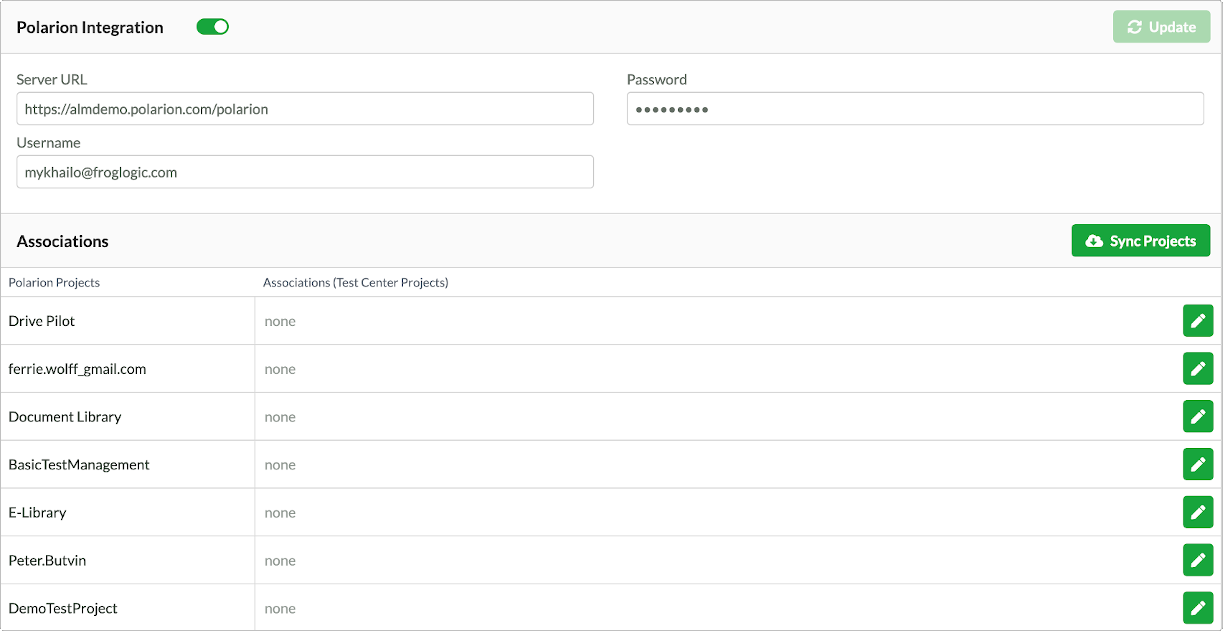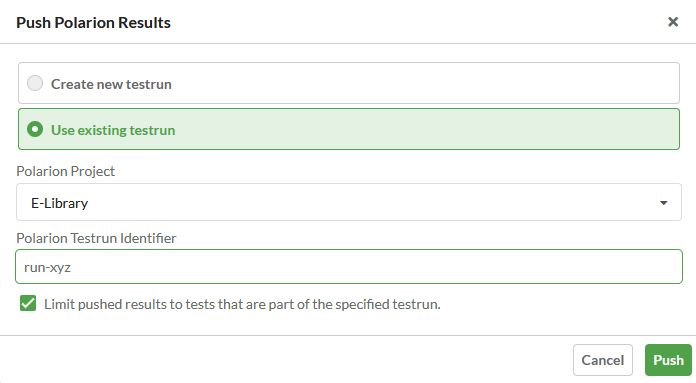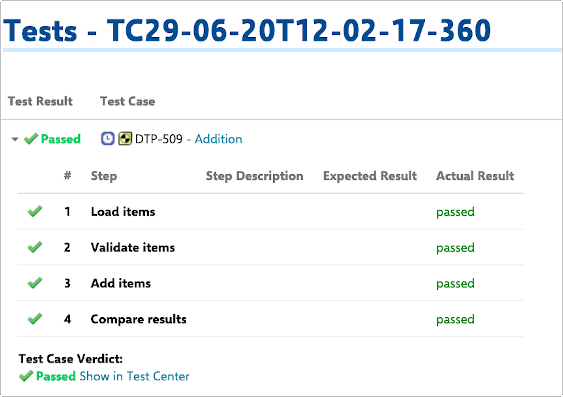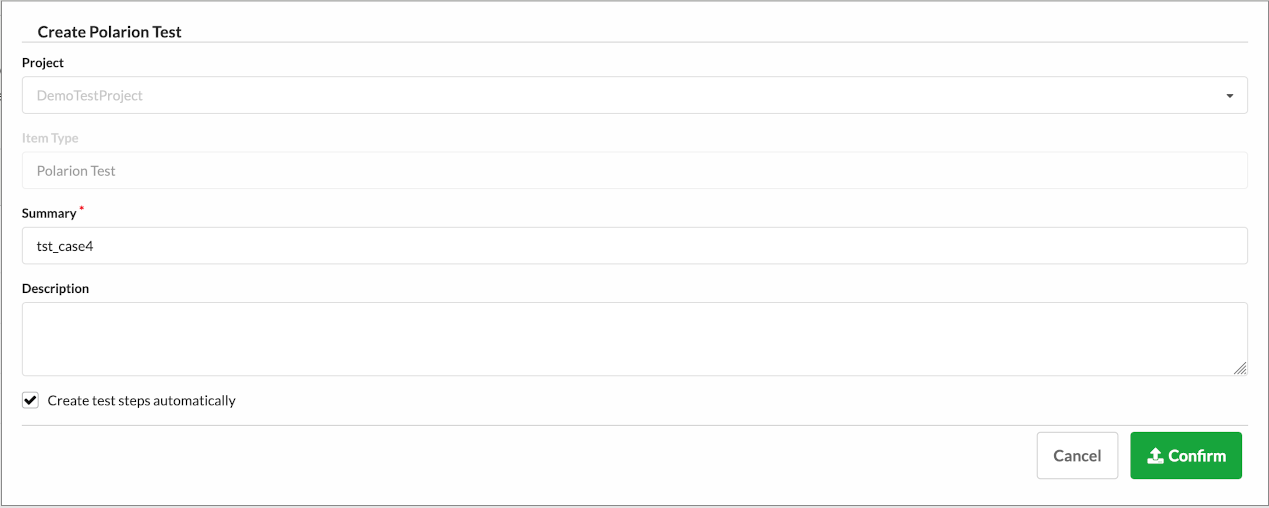Integration for Polarion
Polarion is a browser-based requirements management, quality assurance, and application lifecycle management (ALM) platform. The integration provides traceability and result synchronization between Test Center and Polarion tests. Users can manually map Polarion test cases to Squish test suites and cases, as well as push Squish test results to a Polarion server.
Prerequisites
A Polarion project must be configured for testing and quality assurance. For example, it should be created with one of the project templates preconfigured for test management projects that include work item types to support testing, such as a V-Model project or Agile project. Otherwise, you must configure all items manually, including test cases and test executions. If you are not using a preconfigured testing template, make sure that test cases contain a test steps field and that it is enabled
Configuration
The Polarion integration works both with the cloud and server version. Administrators can turn on Polarion Integration in Global Settings.

Adding Polarion account information to Test Center
To establish the connection to Polarion, enter the following information:
- Server URL is the Polarion server endpoint URL. For example,
https://almdemo.polarion.com/polarion - Username
- Password
In the Polarion Test Case id field, specify the test type id used for your tickets in Polarion.
Click the Update button to save the information you entered.
Click the Sync Projects button to fetch Polarion projects and make them appear in the Associations list, where you can map each Polarion project to its Test Center counterpart.

Fetched Polarion projects
Traceability view
To open the Traceability view, select Polarion in the History or Explore view of an associated project.

Selecting Polarion from the menu bar
At first, the table is empty. To fetch the tests and test steps of the mapped Polarion projects from the Polarion server, click the Pull button. If the mapped projects contain lots of tests or test steps, pulling can take some time. Consecutive pull operations done the same day take less time because the progressive pulling mode is used. This means that deleted tests are not removed from the traceability table until a complete pull is performed. Switching between complete and progressive pulling is done automatically, so that a complete pull is done once a day.
To map the pulled Polarion tests to tests managed by Test Center in the Traceability view, click the Edit button of a table entry in the Mapping column.
Pushing Results
You can push results of mapped tests to your Polarion instance by using the Push button. A push dialog will open, that gives you the option to create a new Polarion testrun, or to push results into an existing Polarion testrun.

Polarion Push Dialog
To push into an existing Polarion testrun, you first have to select the Polarion project that contains the testrun, and then you have to enter the identifier of the testrun. If Limit pushed results to tests that are part of the specified testrun is enabled, only results will be pushed that are either already part of the testrun (by manual selection or previous pushes), or that match the queries that make up the Polarion testrun. If the checkbox is disabled, all results are pushed, regardless of whether they are part of the testrun.

Pushed Polarion testrun
Click items in the Actual Result column to open a corresponding Test Center view.
Creating Polarion tests from Test Center
You can create a new Polarion test case from an existing Test Center test in the Actions column in the Explore view. In the Create Polarion Test dialog, specify the following settings:
- Project is needed if more than one project is associated to the same Test Center project
- Summary corresponds to the test case name displayed in Polarion
- Description
Select Create test steps automatically to not only create the currently selected Test Center test in Polarion but also create its children as steps in Polarion. For example, when you create a Polarion test from a scenario, all steps of the scenario are also created.

Polarion test creation
© 2024 The Qt Company Ltd.
Documentation contributions included herein are the copyrights of
their respective owners.
The documentation provided herein is licensed under the terms of the GNU Free Documentation License version 1.3 as published by the Free Software Foundation.
Qt and respective logos are trademarks of The Qt Company Ltd. in Finland and/or other countries worldwide. All other trademarks are property
of their respective owners.

